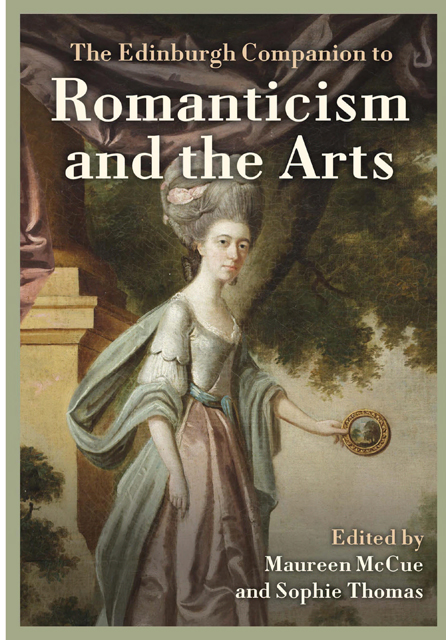25 - Romantic Caricature and Comics
Published online by Cambridge University Press: 25 April 2023
Summary
The growth of caricature and grotesque cartoons during the Romantic period are not, with the benefit of hindsight, a particular surprise. The eighteenth century had been a golden age of satire in Britain, while innovations in print culture and the book trade – combined with increasing literacy rates among the general public – created a wider market for the publications of artists such as Gillray, Rowlandson and Cruikshank. What is less predictable is how the works of the Romantics themselves would influence a later development: comic books and graphic novels. As such, this chapter is divided into two parts: the first considers the rise of cartoons and caricatures during the Romantic period; while the second explores the influence and reception of Romantic artists, especially that of William Blake, during the post-war period.
Romantics and Caricature
Aristotle famously remarked in his Poetics that ‘Comedy aims at representing men as worse, Tragedy as better than in actual life’, and the depiction of the follies of mankind has long been represented in literature, painting and sculpture to provoke laughter, what Marteinson calls that ‘most peculiarly human behaviour observed in nature’ (as cited in Marteinson 2017, 15). It was following the Renaissance, however, that a particular conflation between the act of comedy and its depiction in caricature became more clearly defined, so much so that the origins of terms such as ‘cartoon’ came to be absorbed into the notion of comedy. John Evelyn in his diaries (published in 1684) referred to cartoons as preparatory studies for artworks by Tintoretto and Raphael, in the possession of the Duke of Norfolk (Diaries 1955, III:567 and IV:312). In this, the first recorded use of the word in English, he drew on the French carton which in turn originated in the Italian cartone, from carta or paper. This was pretty much entirely its use throughout the eighteenth century. Steele in The Spectator, for example, called attention to the ‘Cartons [sic] in Her Majesty’s Gallery at Hampton-Court’ (Spectator, 226 (1)) while Walpole, in his Anecdotes of Painting in England (1762), which relied heavily on George Vertue’s notebooks, recalled how Frederic Zucchero, having been forced to flee Rome, ‘went into Flanders, and made cartoons for tapestry’ (Walpole 1798, 121). The notion of a cartoon as a humorous illustration, especially regarding comics, was not consolidated until the mid-nineteenth century, most notably when Punch announced the publication of Punch’s Cartoons in 1843.
- Type
- Chapter
- Information
- The Edinburgh Companion to Romanticism and the Arts , pp. 471 - 485Publisher: Edinburgh University PressPrint publication year: 2022



